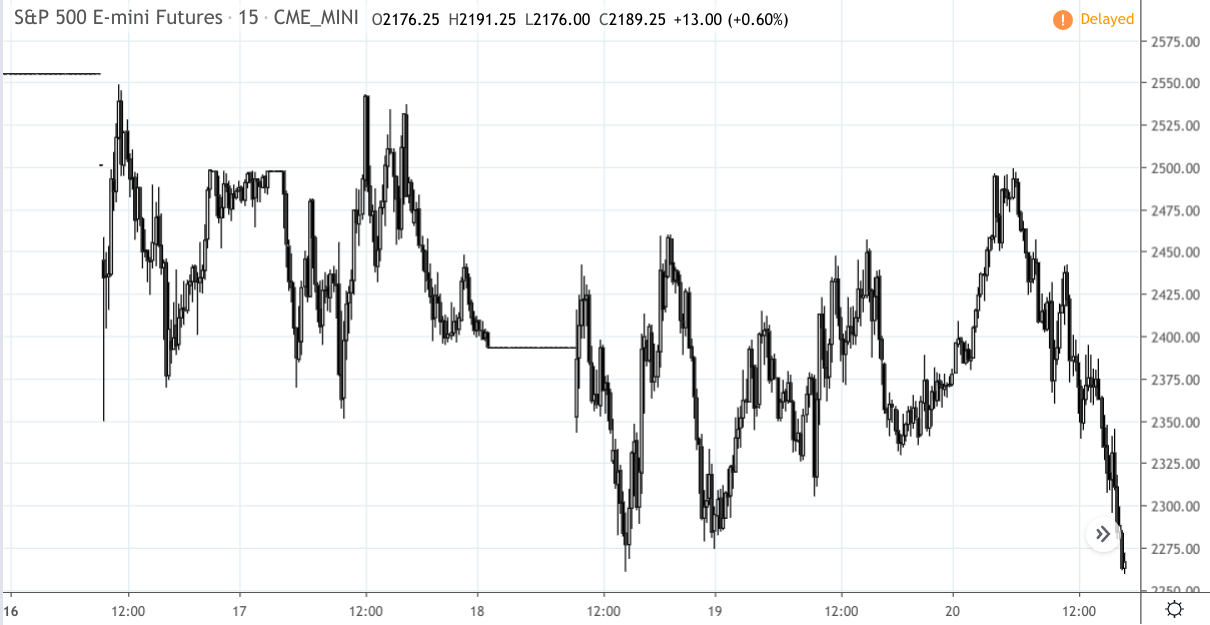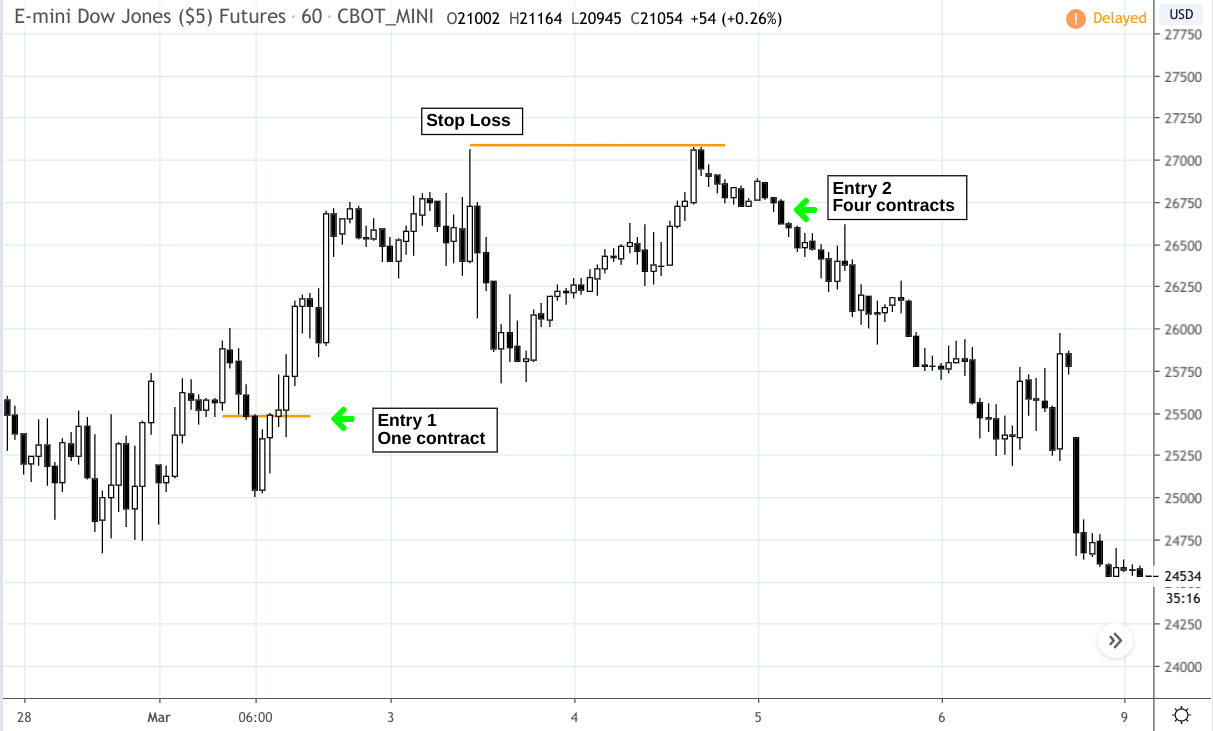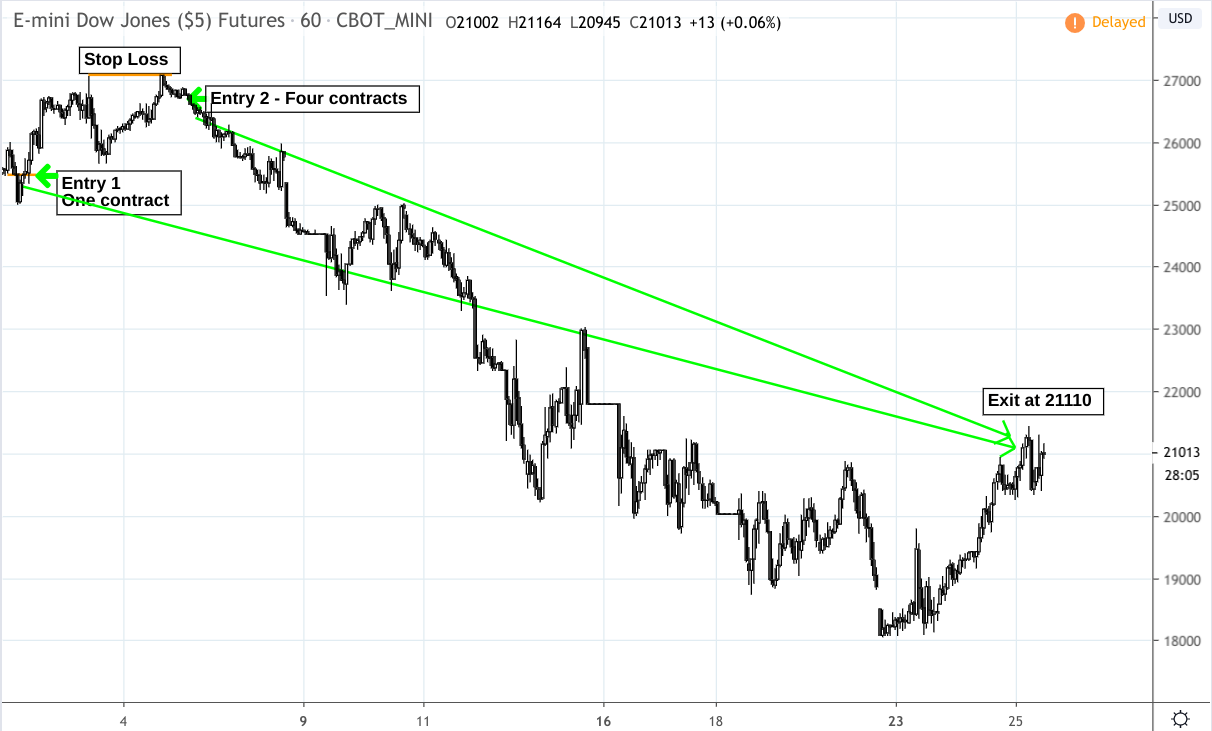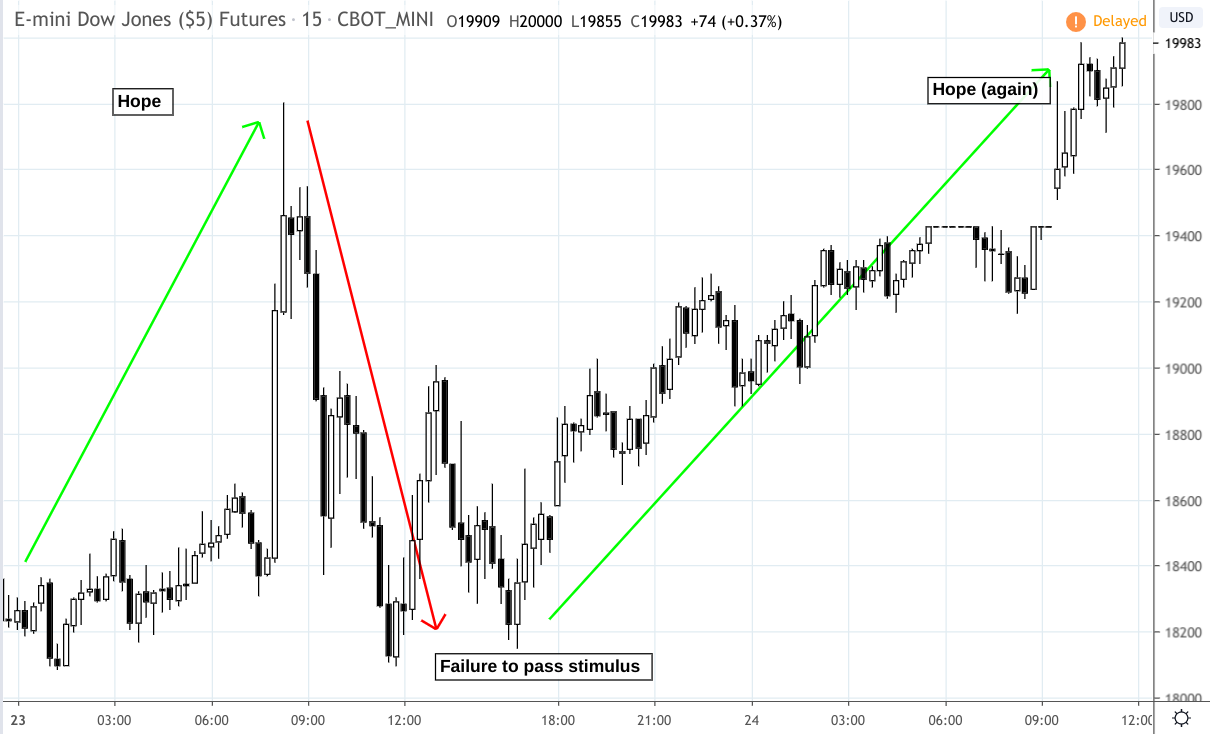The following article on Trading Futures in a Bear Market is the opinion of Optimus Futures.
If this is your first bear market, then you might find yourself a bit stunned by the turbulence that’s been hitting the markets over the last few weeks. This is especially the case if you’re a short-term trader. You see, the 2008 financial crisis didn’t happen quite this fast, and the volatility, though quite bad, wasn’t this bad. The crash that comes closest in recent history is probably the 1987 stock market crash, though the initial plunge (and the bear market to follow) was short-lived.
Right now, the markets won’t find a bottom until the COVID-19 pandemic finds some kind of resolution. And by the looks of it, whatever resolution is out there surely isn’t on the horizon. And as far as the overall economic impact is concerned, arguably, we’re still seeing the tip of the iceberg. What this means is that there’s more volatility to come.
Perhaps you’re “long” volatility, meaning you thrive on sharp price swings. But again, perhaps this level of volatility–one in which index futures hit limit-down well before the stock market even opens–is a bit too turbulent, even for your taste.
Take a look at the chart below, the S&P 500 index over the last five months:
The current trend is obviously sharp and downward-sloping. So, if you took more of a position trade approach–buying puts or staying short the market–then your trading situation would’ve been relatively simple.
But if you’ve been trading intraday, or swing trading from one day to the next, the market volatility might have made your directional biases a bit more confusing. Just take a look at the 15-minute chart of the S&P 500 futures and you’ll see what we mean.
Certainly, there are ways to make money in these types of market conditions, and we’ll leave that up to you. What we want to focus on is how not to mess up when faced with an exceedingly turbulent market.
Bear in mind that 50% of successful trading is not messing up your trades. And that’s what we’ll cover here today, namely, how to avoid key mistakes that will likely blow up your trading account.
As you know, you can’t always force a win, but you can avoid foreseeable trading blunders. So, once you have the right defensive stance in mind, only then should you concern yourself with scoring a gain. Here are a few important points to consider.
Don’t Go “All In”…Trading Isn’t Gambling, and Gambling Isn’t the Best Trading Strategy
When someone goes “all in,” say, in a poker game, that person takes his or her entire stake and bets it on one hand. Sure, poker requires skill, but when you’re making such a bet, you’re also relying on lady luck to deliver a victory. In trading, such a big gamble isn’t necessary, as you can always accumulate a large return by racking up a series of smaller gains. You just have to be patient and strategic.
In futures trading, going “all in” can also mean overleveraging your position. Futures contracts are always “leveraged.” So, if you’re overleveraged, that means you’re not paying attention to your % risk levels.
Take the Dow Jones futures (YM) on February 28, 2020. Let’s suppose you have a small $5,000 account. You know that the markets are fundamentally stacked to the downside, so you go in with a one-contract short position, potentially a high-probability trade.
You go short at 25,485 thinking you’re about to ride another wave down. Instead, the YM rallies on “headline risk” optimism. Let’s suppose you attempt to hold on, thinking that the market is eventually going to resume its downtrend. As you see the market could continue rallying beyond your exit, and if you have no exit you could potentially be in a debit (where you have to add funds beyond your initial investment).
The common sense thing would be to calculate your trade ahead of time, determining what a full position might mean to you, and entering only partial positions in a smaller contract (micro to reserve your buying power should the market turn against you). Below we have used the Micro Dow as an example.
Disclaimer: The placement of contingent orders by you or broker, or trading advisor, such as a “stop-loss” or “stop-limit” order, will not necessarily limit your losses to the intended amounts, since market conditions may make it impossible to execute such orders
Don’t Double Down…Instead, Build Incremental Positions
Here would’ve been a smarter way to approach it:
With a $5,000 account, you decide to risk 30% of your capital, or $1,500.
- You enter one Micro contract (MYM) at 25485. Your stop loss at 27059 aims to cap your market loss to -$787.
- Still in the market, you notice the downtrend potentially resuming at 26728.
- With a stop loss at 27059, you can now add additional 4 micro contracts, as your market risk for all four would be around $621, matching close to your 30% risk target.
The math Explanation: We illustrated this example with the Micro Emini Dow. Each point is $0.5.
Notice how the first trade ended up becoming a “wrong” entry point. The difference between this entry and the one in the previous example is that this entry isn’t overleveraged. The risk was considered and precalculated.This allows you to still have buying power should the market–as you expect–turn back around in your favor.
The second entry higher up in price allows you to enter more contracts, as the risk of 331 points is much tighter.
But the important lesson here is that you predetermined the total market risk to be 30% or $1,500, and you worked your positions around this %R (risk) level.
If you had closed your position at 21110, your first entry (one contract) would have potentially yielded a market gain of $2187.50, while the second (four contracts), a potential gain of $11,236. As you can see, it potentially pays to be strategic with your entries.
Don’t Try to Pick the Bottom
If there’s anything certain in the markets, it’s that humans are awful when it comes to market timing. When it comes to exploiting the bottom range of a bear market in the hopes of catching the start of a new bull cycle, the approach that seasoned investors take differs greatly from most traders.
Stock investors know you can’t accurately call the bottom. The smarter ones also know that the last third of a bear market is where the majority of the panic selling takes place. So instead of trying to time their entries at the bottom, they instead begin accumulating assets on an incremental basis on the way down to the bottom range.
In contrast, many traders attempt to “fade” the bottom by going long futures. And because futures contracts are leveraged instruments, a wrong call can easily blow up one’s trading account. Perhaps buying a call option on a futures index might be the less risky way to go about it.
Take a look at the last six months of the 2007-2009 bear market.
Could anyone have called the bottom after a gut-wrenching 57% decline? Traders who attempted to fade this series of lower lows might easily have been subjected to massive losses save the March 2009 bottom.
Investors, on the other hand, might have used each bottom to accumulate assets incrementally, positioning their portfolio for the coming bull cycle. But if you’re a short-term trader of leveraged assets (i.e. futures), then taking an investment approach might not have been the most suitable strategy.
Try to Understand the Factors Driving Volatility
As we write this, the Dow Jones jumped 1,544 points. The CNBC headline reads “Market comeback gains steam as Dow soars 1,500 points on stimulus deal hope.” Yesterday, the Dow rose on hopes of a stimulus package and then tanked around 3% because it failed to pass in Congress due to disagreements on the allocations of the content.
It looked like this:
This is generally how all three US indexes have been acting over the last several weeks. This type of short-term volatility is fueled by market sentiment. We also call it “headline risk.”
For day traders and swing traders, this type of volatility is a double-edged sword–it provides lots of trading opportunities, yet the unexpected nature of the volatility makes it more fraught with risk.
On a larger, fundamental scale, the fate of the market amid COVID-19 is arguably undecided and unknown. It’s an economic problem pegged to a health crisis.
If US Treasury Secretary Steve Mnuchin publicly announced (and walked back his comments) that the US unemployment rate can reach as high as 20%, what does that mean for the markets if joblessness reaches Great Depression proportions?
According to Moody’s Analytics, 80 million jobs–over half of the entire US workforce–are at risk. Not everyone is going to “lose” their jobs, but many jobs will be compromised by the impending weakness in the overall economy.
First key point: if you plan on trading today’s market on a short-term basis, pay attention to the news in order to take advantage of (or hedge against) headline risk.
Second key point: if you are going to “news trade,” then do your best to weigh the response of the markets against the larger fundamental picture, knowing well that the large-scale fundamental impact is still unknown.
The Bottom Line
The points we covered above may seem like common sense to you. Well, they are, but many traders seem to violate one or a few of these rules. The difference is night and day–having money to continue trading versus having no money left because you blew it up.
As with any business venture, be aggressive but don’t overextend your resources or overreach in your attempt. You can still “go big or go home” only as long as you keep your “home” out of harm’s way, figuratively speaking.
Please be advised that trading futures and options involves substantial risk of loss and is not suitable for all investors. Past performance is not necessarily indicative of future results. This matter is intended as a solicitation to trade.











